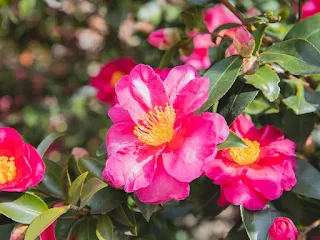Artificial plant lights, also known as grow lights, are specially designed lighting systems that provide plants with the light spectrum and intensity necessary for their growth and development. These lights are particularly useful for indoor gardening, where natural light may not be sufficient or available.
There are different types of artificial plant lights available, each with its unique features and benefits. Some of the most common types of grow lights include:
Fluorescent Grow Lights:
These lights are cost-effective and produce a wide spectrum of light, making them suitable for a variety of plants. They are available in different sizes and shapes, making them ideal for different indoor gardening setups.
LED Grow Lights:
LED lights are energy-efficient, long-lasting, and produce less heat, making them a popular choice for indoor gardening. They come in various colors and can be customized to provide the exact light spectrum required by different plants.
High-Intensity Discharge (HID) Grow Lights:
HID lights are among the most powerful grow lights available, providing high-intensity light and excellent coverage. They are available in two types: Metal Halide (MH) and High-Pressure Sodium (HPS), each with its specific features and benefits.
When choosing artificial plant lights, it's essential to consider factors such as the size of your grow space, the type of plants you're growing, and your budget. It's also important to ensure that the light intensity and spectrum provided by the grow light are suitable for your plants' growth stage.
Benefits of Using Artificial Lights to Grow Your Plants
There are several benefits of using artificial lights to grow plants, especially in indoor gardening scenarios. Some of the key advantages include:
Year-round gardening: Artificial lights allow you to grow plants indoors year-round, regardless of the weather or seasonal changes. This means you can enjoy fresh produce, herbs, or flowers all year, even in the dead of winter.
Improved growth rates: Plants grown under artificial lights often grow faster than those grown under natural light. This is because you can provide the exact light spectrum and intensity required for optimal growth and development.
Control over plant growth: With artificial lights, you have precise control over the amount and duration of light your plants receive. This allows you to tailor your lighting setup to the specific needs of your plants and promote healthy growth.
Better yields: When plants receive the optimal light spectrum and intensity, they produce more fruit, flowers, or foliage. This means you can get a higher yield from your indoor garden compared to outdoor gardening.
Space-saving: Indoor gardening with artificial lights allows you to grow plants in smaller spaces such as apartments or basements. This is especially beneficial for urban gardeners or those without access to outdoor gardening space.
Pest and disease control: Indoor gardening with artificial lights allows you to control pests and diseases more easily compared to outdoor gardening. This is because indoor environments are more controlled and have fewer external factors that can impact plant health.
Overall, using artificial lights to grow plants is an effective way to provide a controlled and optimized environment for healthy plant growth and development.
How To Choose The Right Artificial Lights For Your Plants
Choosing the right artificial lights for your plants can be a daunting task, but here are some tips that can help:
Identify the light requirements of your plants: Different plants have different light requirements. Some plants need high-intensity light, while others need less intense light. Determine the light requirements of your plants and choose the appropriate lights accordingly.
Choose the right type of light: There are several types of artificial lights available, including fluorescent, LED, and HID lights. Each type has its own advantages and disadvantages, so choose the one that suits your needs and budget.
Consider the color temperature of the lights: The color temperature of lights is measured in Kelvin (K). Different plants respond differently to different color temperatures. For example, plants that need more blue light may benefit from lights with a higher color temperature (5000K-6500K), while plants that need more red light may benefit from lights with a lower color temperature (2700K-3500K).
Determine the size of the area you need to cover: The size of the area you need to cover will determine the number and wattage of lights you need. Make sure you choose lights that provide enough coverage for your plants.
Consider the cost and energy efficiency of the lights: Different lights have different costs and energy efficiencies. Consider the initial cost of the lights as well as the long-term operating costs to ensure that you choose a cost-effective and energy-efficient option.
Pay attention to the quality of the lights: Look for lights that are high-quality and durable. Cheaper lights may not provide the necessary light intensity or color temperature, and may not last as long as more expensive options.
Consult with a professional: If you're unsure about which lights to choose or how to set them up, consult with a professional or a horticulturist who can provide expert advice and guidance.
By taking these factors into consideration, you can choose the right artificial lights for your plants and ensure they receive the optimal amount and quality of light they need to thrive.
.jpg)

.jpg)







